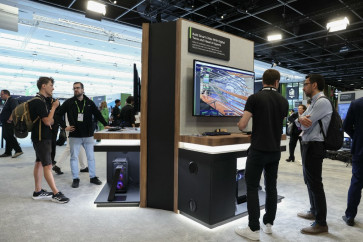Popular Reads
Top Results
Can't find what you're looking for?
View all search resultsPopular Reads
Top Results
Can't find what you're looking for?
View all search resultsAre we in a financial bubble?
Financial bubbles are notoriously difficult to define in real time – until the moment they burst.
Change text size
Gift Premium Articles
to Anyone
F
inancial bubbles are notoriously difficult to define in real time – until the moment they burst. To say with any conviction whether we are in one now, one must understand the magnitude and intensity of today’s artificial intelligence investment boom, as well as the timing of the potential bubble’s end.
There are at least four ways to determine when a bubble is building in financial markets. The first is to look at valuations. Even when conventional valuation metrics such as price-to-earnings (PE) ratios reach excessive levels, the market might excuse this by focusing on new metrics to justify overvaluations.
For much of the past 25 years, the average PE ratio across the S&P 500 has been 16x, whereas now it is 25x. But this increase can be justified by focusing on the potential for new productivity gains from AI, or on products with a national-security value – such as semiconductors, which will be protected and ultimately backstopped by the government.
Moreover, some commentators argue that existing indicators like gross domestic product simply are not capturing new sources of growth potential in the economy. For now, the fact that expected equity returns are higher than bond returns means that equity valuations are indeed “rational,” even if they seem high.
A second factor to consider is the prevailing narrative, which usually revolves around the message that “this time is different.” A bubble is almost always buttressed by belief in a new paradigm or emerging technology – whether it be the internet, the Japanese production process, electricity, railroads or canals. The typical narrative creates a mental bridge between what actually is (current cash flows) and what could be (forecasts of future revenues).
The bridge is what lures investors to buy into a possible upside. While they may start by focusing on the rationally calculable growth forecasts of the business, the next step is to buy into an irrational story about an imminent economic transformation. This is when investing becomes overly one-sided, because it becomes hard to argue against the prevailing narrative.
Just in the past month, two start-ups have garnered eye-popping valuations by tapping into the AI narrative. Nano Nuclear Energy was valued at US $2.3 billion despite having no revenue or even a license to operate; and the data-center energy supplier Fermi, which was founded only in January 2025, was valued at $14.8 billion.



















